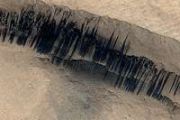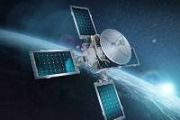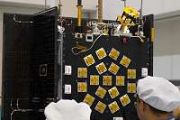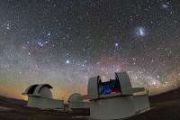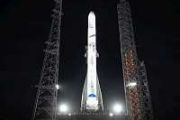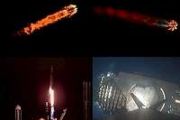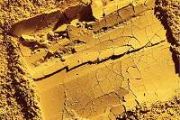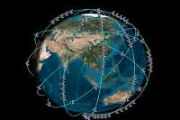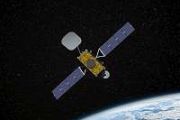
Copernical Team
Juice post-launch briefing replay
 Video:
00:28:00
Video:
00:28:00
Watch a replay of the Jupiter Icy Moons Explorer (Juice) post-launch briefing, live from ESA’s European Spacecraft Operations Centre (ESOC) in Darmstadt, Germany.
ESA’s Juice mission was launched into space on an Ariane 5 from Europe’s Spaceport in French Guiana on 13 April 2023, on an eight-year cruise to Jupiter. It will make detailed observations of gas giant Jupiter and its three large ocean-bearing moons – Ganymede, Callisto and Europa.
Sweden intends to send ESA astronaut to the International Space Station
Press Release N° 18–2023
At the Space Symposium in Colorado Springs, USA, on 18 April, ESA signed a letter of intent with the Swedish National Space Agency to send an ESA astronaut to visit the International Space Station on an Axiom mission.
China and Brazil to expand cooperation in space development
 On April 14, under the witness of Chinese President Xi Jinping and Brazilian President Lula, Zhang Kejian, director of China National Space Administration, signed the "People's Republic of China Supplementary Protocol between the Government and the Federative Republic of Brazil on Cooperative Development of Earth Resources Satellite 06 and the 2023-2032 China National Space Administration and Br
On April 14, under the witness of Chinese President Xi Jinping and Brazilian President Lula, Zhang Kejian, director of China National Space Administration, signed the "People's Republic of China Supplementary Protocol between the Government and the Federative Republic of Brazil on Cooperative Development of Earth Resources Satellite 06 and the 2023-2032 China National Space Administration and Br Nova Space to offer Space Professional Development Program for AWS Employees
 Pure Capital Solutions' Nova Space subsidiary is providing Amazon Web Services (AWS) employees with space education, an exclusive digital learning platform, and digital credentials.
Nova Space will provide access to its Space Professional Development Program, an award winning virtual space education workforce development program, integrated with proprietary training technology in a seamles
Pure Capital Solutions' Nova Space subsidiary is providing Amazon Web Services (AWS) employees with space education, an exclusive digital learning platform, and digital credentials.
Nova Space will provide access to its Space Professional Development Program, an award winning virtual space education workforce development program, integrated with proprietary training technology in a seamles D-Orbit launches ION's tenth Orbital Transportation Mission
 Space logistics and orbital transportation company D-Orbit launched Guardian, the 10 th commercial mission of their proprietary orbital transfer vehicle (OTV) ION Satellite Carrier (ION).
The OTV lifted off on April 14th, 2023, at 23:48 p.m. PDT (April 15th, 2023 at 06:48 UTC) aboard a Falcon 9 rocket from the Space Launch Complex 4 East (SLC-4E) at Vandenberg Space Force Base in Californi
Space logistics and orbital transportation company D-Orbit launched Guardian, the 10 th commercial mission of their proprietary orbital transfer vehicle (OTV) ION Satellite Carrier (ION).
The OTV lifted off on April 14th, 2023, at 23:48 p.m. PDT (April 15th, 2023 at 06:48 UTC) aboard a Falcon 9 rocket from the Space Launch Complex 4 East (SLC-4E) at Vandenberg Space Force Base in Californi Seeking Innovative Concepts for Next-Generation Antennas
 DARPA is soliciting disruptive ideas from small businesses and nontraditional defense contractors for novel antenna designs, materials, manufacturing, or processing as the first topic issued under the agency's Bringing Classified Innovation to Defense and Government Systems (BRIDGES) initiative.
The topic area aims to explore new designs that would offer significantly increased performance
DARPA is soliciting disruptive ideas from small businesses and nontraditional defense contractors for novel antenna designs, materials, manufacturing, or processing as the first topic issued under the agency's Bringing Classified Innovation to Defense and Government Systems (BRIDGES) initiative.
The topic area aims to explore new designs that would offer significantly increased performance Improving how robots communicate with people
 Robots are machines that can sense the environment and use that information to perform an action. You can find them nearly everywhere in industrialized societies today. There are household robots that vacuum floors and warehouse robots that pack and ship goods. Lab robots test hundreds of clinical samples a day. Education robots support teachers by acting as one-on-one tutors, assistants and dis
Robots are machines that can sense the environment and use that information to perform an action. You can find them nearly everywhere in industrialized societies today. There are household robots that vacuum floors and warehouse robots that pack and ship goods. Lab robots test hundreds of clinical samples a day. Education robots support teachers by acting as one-on-one tutors, assistants and dis PickNik Robotics and Motiv Space Systems partner for advanced robotics development
 PickNik Robotics, a leader in advanced robot arm software solutions, and Motiv Space Systems, a leading designer and manufacturer of space-rated robotic systems, motor controllers, and mechanisms, has announced a partnership to develop advanced robotics for space applications. The partnership aims to advance In-Space Servicing, Assembly, and Manufacturing (ISAM) capabilities through the integrat
PickNik Robotics, a leader in advanced robot arm software solutions, and Motiv Space Systems, a leading designer and manufacturer of space-rated robotic systems, motor controllers, and mechanisms, has announced a partnership to develop advanced robotics for space applications. The partnership aims to advance In-Space Servicing, Assembly, and Manufacturing (ISAM) capabilities through the integrat Inside the "space factory"
 Bigger. And even better. That's the trajectory of Space Systems Operations - aka the "space factory" - since its 2002 opening outside Tucson, Arizona.
Run by Raytheon Missiles and Defense, a business of Raytheon Technologies, the space factory covers over 49,000 square feet. Inside are dozens of clean rooms housing space simulating technologies to support production and testing of complex
Bigger. And even better. That's the trajectory of Space Systems Operations - aka the "space factory" - since its 2002 opening outside Tucson, Arizona.
Run by Raytheon Missiles and Defense, a business of Raytheon Technologies, the space factory covers over 49,000 square feet. Inside are dozens of clean rooms housing space simulating technologies to support production and testing of complex SatixFy and Presto Engineering test rad-hard space-grade ASICs
 SatixFy has announced a strategic partnership with Presto Engineering, a recognized expert in ASIC design and semiconductor engineering and production services. This partnership supports SatixFy's growth of the Satellites constellation-based communication market by developing high-quality, space-grade and radhard (radiation hardened) ASICs (Application-Specific Integrated Circuits).
ASICs
SatixFy has announced a strategic partnership with Presto Engineering, a recognized expert in ASIC design and semiconductor engineering and production services. This partnership supports SatixFy's growth of the Satellites constellation-based communication market by developing high-quality, space-grade and radhard (radiation hardened) ASICs (Application-Specific Integrated Circuits).
ASICs 










